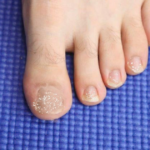When it comes to saving lives during a cardiac emergency, having an Automated External Defibrillator (AED) nearby can make all the difference. But, using an AED effectively requires some knowledge and preparation. Here’s what you need to know to ensure you use an AED properly and safely.
What Is An AED?
An AED is a portable device designed to analyze the heart’s rhythm and deliver an electric shock if needed to restore a normal rhythm. It’s used during sudden cardiac arrest (SCA), a condition where the heart suddenly stops beating effectively. AEDs are user-friendly and can be used by people without medical training, but there are specific considerations to keep in mind.
Check For Responsiveness
Before using the AED, make sure the person is unresponsive. Gently shake their shoulders and shout loudly, “Are you okay?” If there’s no response, call emergency services immediately and get the AED.
Ensure The Environment Is Safe
Always check the environment before using an AED. Ensure that the area is safe for both you and the person. For instance, make sure they’re not in a dangerous location, such as near water or in a high-traffic area.
Proper Placement Of AED Pads
The AED comes with adhesive pads that need to be placed on the person’s bare chest. There are usually two pads: one for the upper right side of the chest and one for the lower left side. If the person has a lot of chest hair, you might need to shave the area to ensure the pads stick properly. If shaving isn’t an option, some AEDs come with extra pads to use if the initial ones don’t adhere well.
Avoid Touching The Person During Analysis And Shock
When the AED is analyzing the heart’s rhythm or delivering a shock, make sure no one is touching the person. This prevents interference with the AED’s analysis and ensures that the shock is delivered effectively. You should also ensure that no one is standing in water or touching the person’s body when a shock is delivered.
Follow AED Instructions Carefully
AEDs are designed to be user-friendly and come with clear, step-by-step audio and visual instructions. Follow these instructions carefully. They will guide you through the process of pad placement, analyzing the heart’s rhythm, and delivering a shock if necessary.
Use Pediatric Pads For Children
If you are treating a child or infant, use pediatric AED pads if available. Pediatric pads are designed to deliver a lower energy shock suitable for smaller bodies. If pediatric pads are not available, use the adult pads but place them as instructed to avoid overlapping.
Monitor The Person’s Condition
Even after the AED has delivered a shock, continue to monitor the person’s condition. If they remain unresponsive or do not start breathing normally, continue CPR (cardiopulmonary resuscitation) until emergency medical personnel arrive.
Know How To Perform CPR
While AEDs are incredibly helpful, they are most effective when used in conjunction with CPR. Knowing how to perform chest compressions and rescue breaths can significantly increase the chances of survival. Many AEDs come with instructions on how to perform CPR, but having prior knowledge and training is always beneficial.
Be Prepared For Multiple Shocks
In some cases, the AED may prompt for more than one shock. If this happens, make sure to follow the device’s instructions for each shock. Each shock can potentially help restore a normal heart rhythm.
Post-Use Considerations
After using the AED, it’s important to make sure the device is returned to service. Check the AED’s status and replace any used pads or batteries as needed. Make sure the AED is in a readily accessible location so it’s available for future emergencies.
AED Maintenance
Regular maintenance of the AED is crucial. Ensure that the device is checked regularly for battery life and that the pads are not expired. Many AEDs will provide alerts when maintenance is needed. Keep the AED in a clean, accessible location and perform routine checks to ensure it’s ready for use when needed.
Training And Awareness
Consider taking a CPR and AED certification course. While AEDs are designed to be used by anyone, formal training can provide you with confidence and improve your ability to respond effectively in an emergency. Many organizations offer courses and certifications, and they often include practical experience with AEDs.
Conclusion
Using an AED can be a life-saving action during a cardiac emergency. By understanding and following these special considerations, you can use the device more effectively and increase the chances of a positive outcome. Remember, your quick and informed response can make all the difference in a critical situation.



